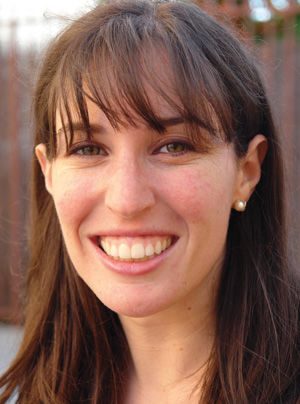Matzah is the bread of our hope
Published March 29, 2018
Over the past many months, we have been on a journey together. We transitioned from the month of Shevat to Adar, changing our outlook to one of happiness and rejoicing as we prepared for the celebration of Purim. As we say, “mi she’nichnas Adar marbim b’simcha” (“When the month of Adar arrives, we should increase our joy”).
Then we moved into the month of Nisan and a spring tradition that is often overlooked: At the start of the month, we go out into nature and bless the first buds of a blossoming tree.
The blessing that is said over such a tree is: “Blessed are you, Adonai our God, who created God’s world lacking nothing and who has created within it goodly creatures and beautiful trees, so that human beings may enjoy them.”
ADVERTISEMENT
Noticing the buds on the tree is an important part of being able to bless it.
And now we prepare to sit at the seder meal with all of its symbols and reminders. A symbol that sits at a prominent space at the seder table is the matzah. It is a powerful bridge to our transition because it is a symbol with a dual identity, representing the food of the slaves as well as the bread eaten by the Israelites as they left Egypt in liberty.
Rabbi Jonathan Sacks explains that there is a transformation from the bread of oppression into the bread of freedom when there is a willingness to share it with others. We mark this shift at the beginning of our seder meal when we invite all who are hungry to come and eat through the words of “Ha Lachma Anya”:
“This is the bread of oppression that our ancestors ate in the land of Egypt. Anyone who is famished should come and eat. Anyone who needs should come and partake of the pesach sacrifice. Now we are here, next year we will be in the Land of Israel. This year we are slaves, next year we will be free.”
ADVERTISEMENT
Sharing food is not something that is done by individuals who fear what tomorrow will bring. It is an opening up of oneself to fellowship and faith, which is the birthplace of hope. The rebirth of spring has always been the first sign of budding hope, a physical reminder of the constant belief that the future will always hold new possibilities.
As we say these words at our seders this year, may we be filled with hope for the future.
Rabbi Jessica Shafrin is PRN Chaplain at Ranken Jordan Pediatric Bridge Hospital and a community chaplain with Jewish Family & Children’s Service. She is a member of the St. Louis Rabbinical Association, which provides the weekly d’var Torah for the Light.















